The Curious Case of the Tanzania / Zanzibar Coelacanths
Click here for a printable version of the introduction.
On the night of September 8th, 2003, a coelacanth was netted at the island of Songa Mnara, off the coast of Tanzania, between Dar Es Salam and Pemba. The fish was later identified at a fish market by one James Taylor (Not the singer!) It had been flayed for drying with the guts discarded, and has since been turned over to authorities. This was the first confirmed report of a coelacanth caught off Tanzania. Combined with the catches off Kenya and Mozambique, and the coelacanths seen at Sodwana, South Africa, it seemed to confirm the existence of permanent coelacanth colonies off the East African coast. Curiously, J.L.B Smith, the "original" coelacanth scientist, had speculated on coelacanths being found off East African reefs, but with no evidence, gave up on the idea following their discovery in the Comoros in 1952.
In August of 2004, 2 more coelacanths were caught off Kigombe, Tanga Region, Tanzania (between Tanga and Pangani), in gill nets at about 70 meters depth, and since then roughly 21 more Tanzanian catches had been reported giving a total of 17-24 coelacanths caught in little more than 12 months. By December, '07, the number had risen to 39, way beyond Comorian catch levels. Concerns were raised that the fish were being targeted and depleted by the gill netting in return for rewards. Rewards were withdrawn, and the Coelacanth Rescue Mission supported by this web site dispatched Deep Release Kits to the area, as 40% of the catches have been reportedly found alive in the gill nets. The presumption was that a scarcity of fishes in the region, possibly due to reef dynamiting, had pressured local fishermen to turn from hand lines to the use of gill nets in new areas, resulting in the coelacanth catches. (A gill net is deployed at the surface or along the bottom. Fish swim into the mesh openings and their gills get caught when they try to back out. However, larger fishes and other animals also get snared in them.)
However, Dr. Eric Verheij, a scientist working with the Tanga Coastal Zone Conservation and Development Programme, claimed that the coelacanth gill net catches have not resulted from local fishermen changing either their methods or fishing locations in recent years. Instead, he noted an association between the gill net catches and the recent and subsequent appearance of trawler vessels in the immediate area. The implication is that either the trawlers are spooking the coelacanths into the gill nets, or are depleting the prey fishes causing the coelacanths to forage more widely into the area of the gill nets.
On July 15, '07 a coelacanth (59.5lbs, 4.4ft) was caught for the first time off of Nungwi, Zanzibar. Nungwi is at the North tip of Zanzibar if that is the correct catch site. This is across the channel and south from the Tanga region, in a possibly overlapping fishing area. This specimen was preserved in the Zanzibar Museum.
In September and October, 2007, an expedition funded by Japan's Aquamarine Fukushima and co-sponsored by the African Coelacanth Ecosystem Program (ACEP), The Sustainable Seas Trust, The Tanzania Fisheries Research Institute, and the Tanga Coastal Zone Conservation and Development Programme put an ROV down in the Tanga region and observed nine coelacanths over a five day period. This was the first in situ observation of the Tanzania coelacanths. Unlike the volcanic submarine terrain of the Comoros, the Tanga coast is flat sedimentary limestone. The adult coelacanths seem to be residing by day in submarine cavities that have eroded out of the rock composite.
In February '08, a second wave of our (dinofish.com's) Deep Release kits were introduced at Tanga in an effort to reduce coelacanth fatalities.
A female coelacanth and her 23 pups, caught on 17 July 2009, had to be discarded because they had decomposed, due to problems in the electricity distribution on Zanzibar.
On September 21, 2010 a pregnant female coelacanth was caught North of Karange Island, about 750 m from Nyuli sand bank, heading east, in Tanzania. The female had about 17-19 pups in her belly.
In November 2011, researchers from the Tokyo Institute of Technology and other entities said the newly found breeding group of coelacanths at Tanga, Tanzania, has existed for more than 200,000 years without genetic contact with other groups.
Tokyo Institute of Technology Prof. Norihiro Okada and his colleagues analyzed genes of more than 20 coelacanths caught off Tanga, northern Tanzania, and nearby sites. The areas are nearly 1,000 kilometers north-northwest of the Comoros Islands.
The results showed the fish belong to a population genetically distinct from that off the Comoro Islands.
The two groups seem to have separated 200,000 to 2 million years ago, the researchers said. The implications of this conclusion for the Sodwana coelacanths to the South, is unclear and may be in dispute, as other scientists have found them to be genetically identical to the Comorian fish.
By 2011, coelacanth catches off Tanzania outpaced all other locations worldwide. Some researchers (Mark Erdmann, for exapmple) believed, as mentioned, that the appearance of coelacanths in these waters was due to the recent introduction of gill net fishing. In other words, the coelacanths were there the whole time, but now they were being caught. But in the following years, reports of catches trailed off. Did fishermen abandon their gill nets, did they deplete the coelacanth population,or did conservation efforts work?
Then comes a new port project to be built overlapping the coelacanth habitat! See article bottom of page.
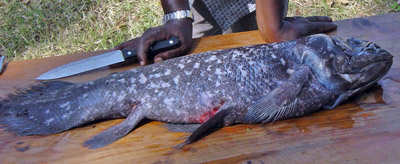
Small coelacanth from Tanzania caught in Feb. '07
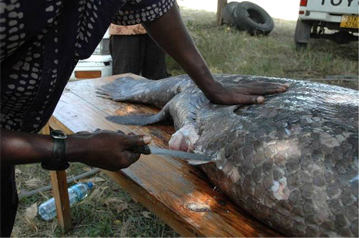
Large pregnant female coelacanth from Tanzania caught in December '07
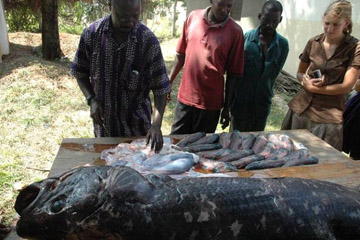
The female coelacanth contained 23 fully developed pups. A sad sight indeed!

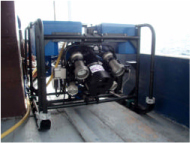
Japan's Aquamarine Fukushima Aquarium's Remotely Operated Vehicle Expedition
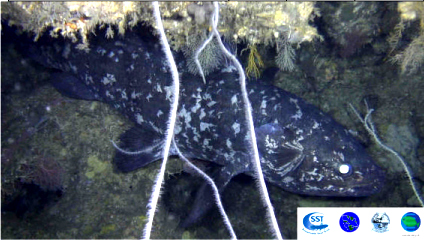
One of the nine Tanzania coelacanths sighted by the Aquamarine Fukushima R.O.V.
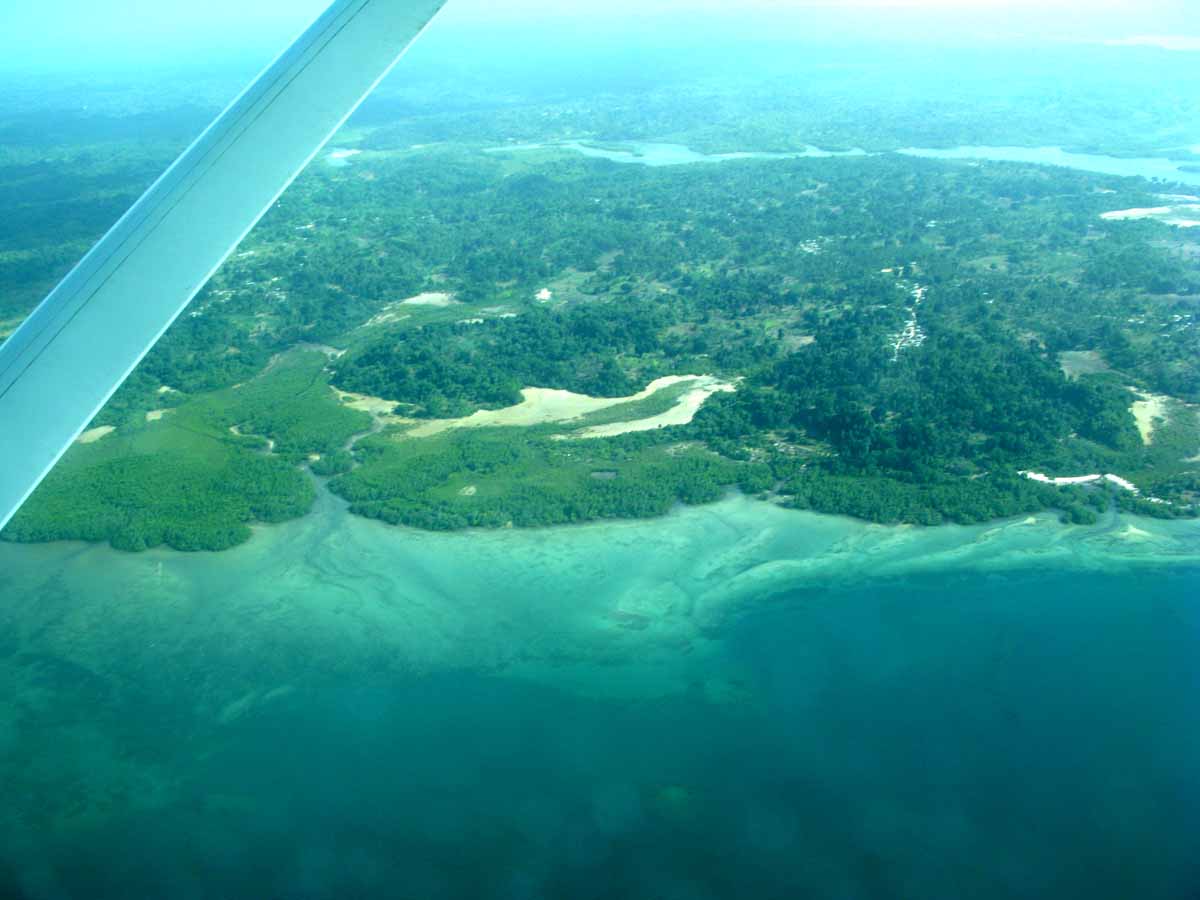
The "Coelacanth Coast" near Tanga, Tanzania.
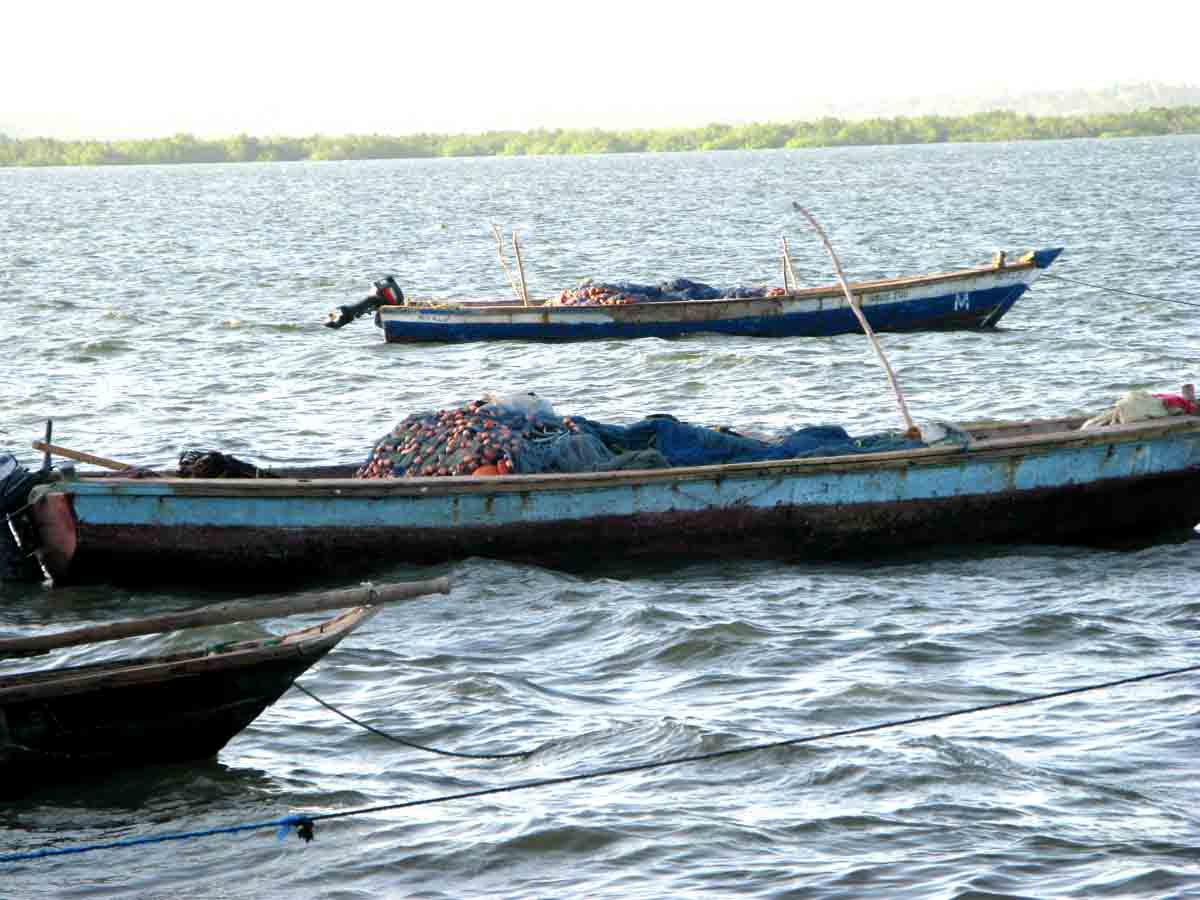
Local fishing boats with nets at Tanga.
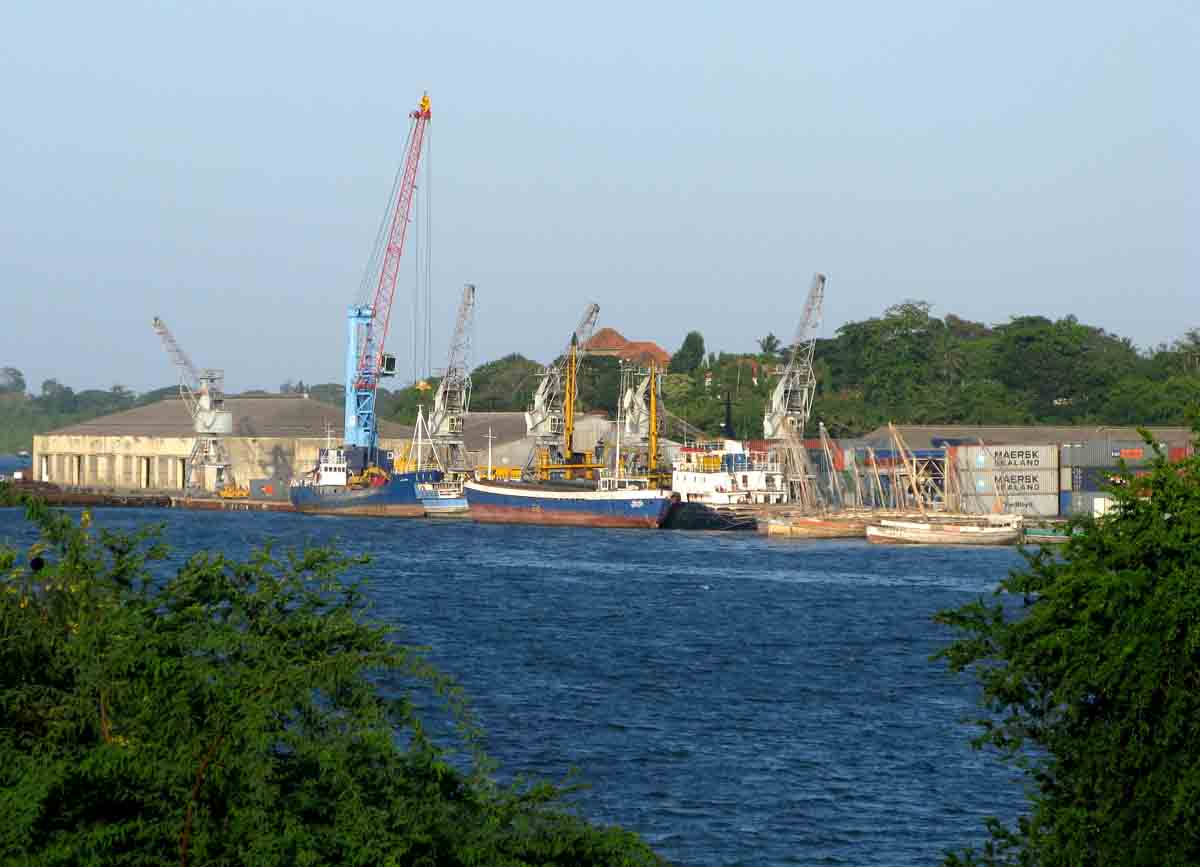
Commercial shipping at Tanga harbor.
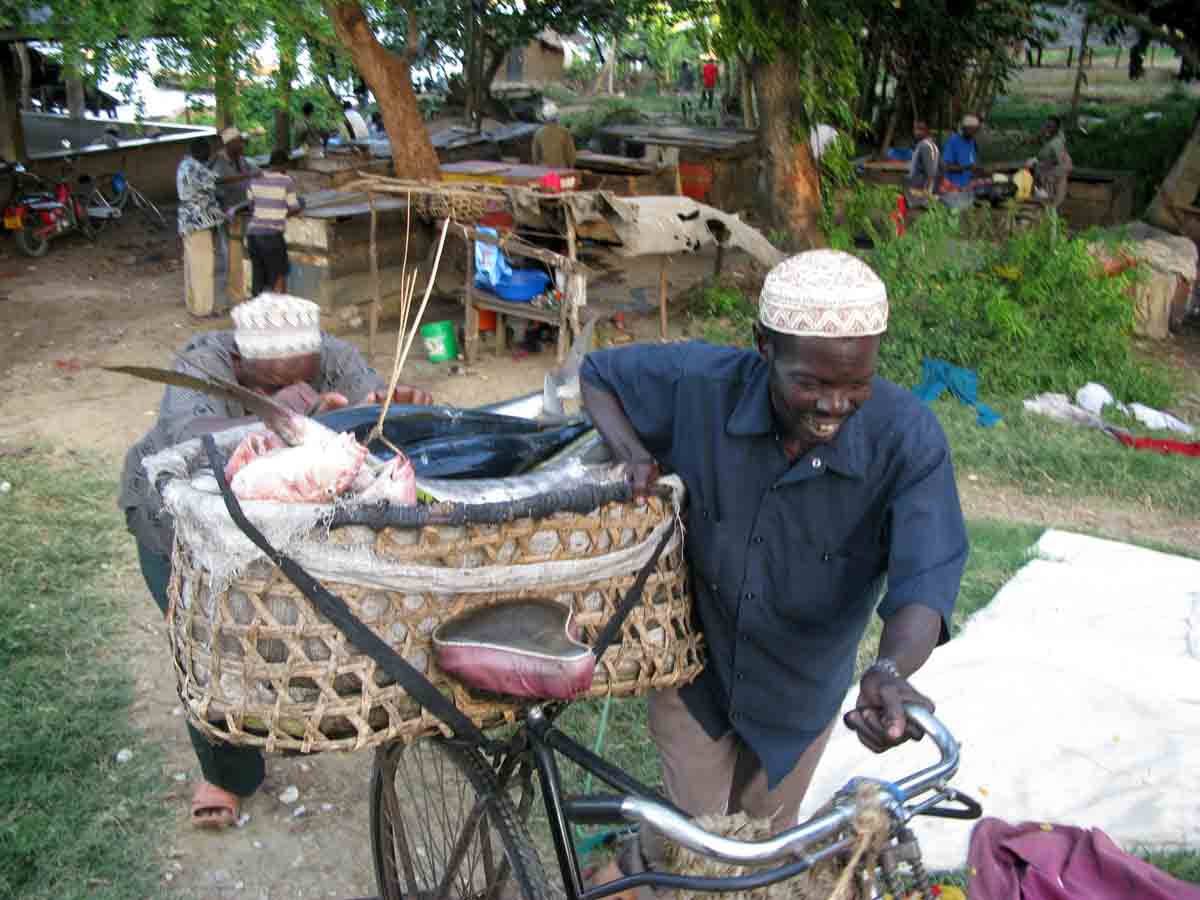
Fishermen at the Tanga fish market.
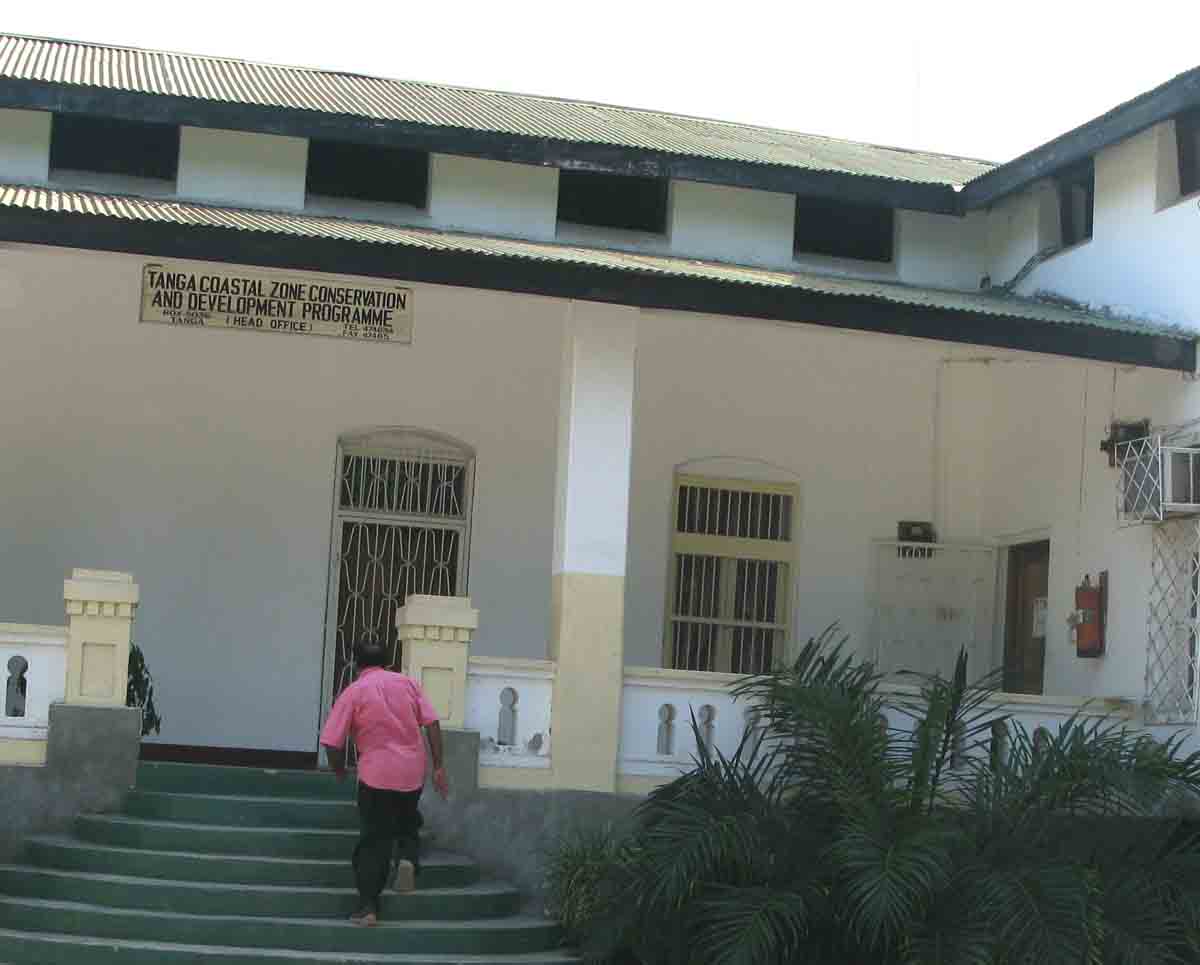
Offices of the Tanga Coastal Zone Conservation and Development Programme.
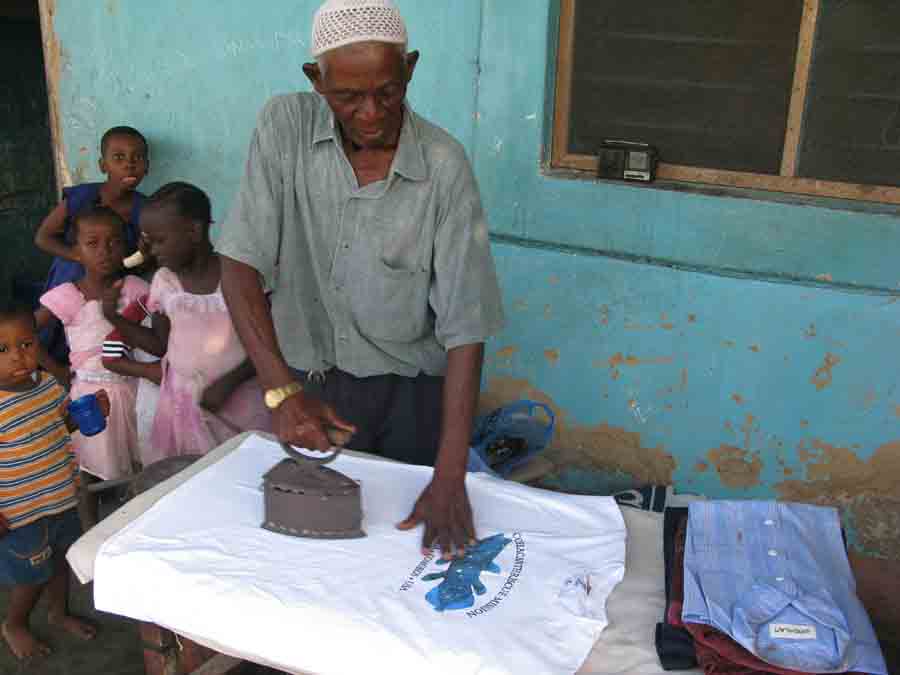
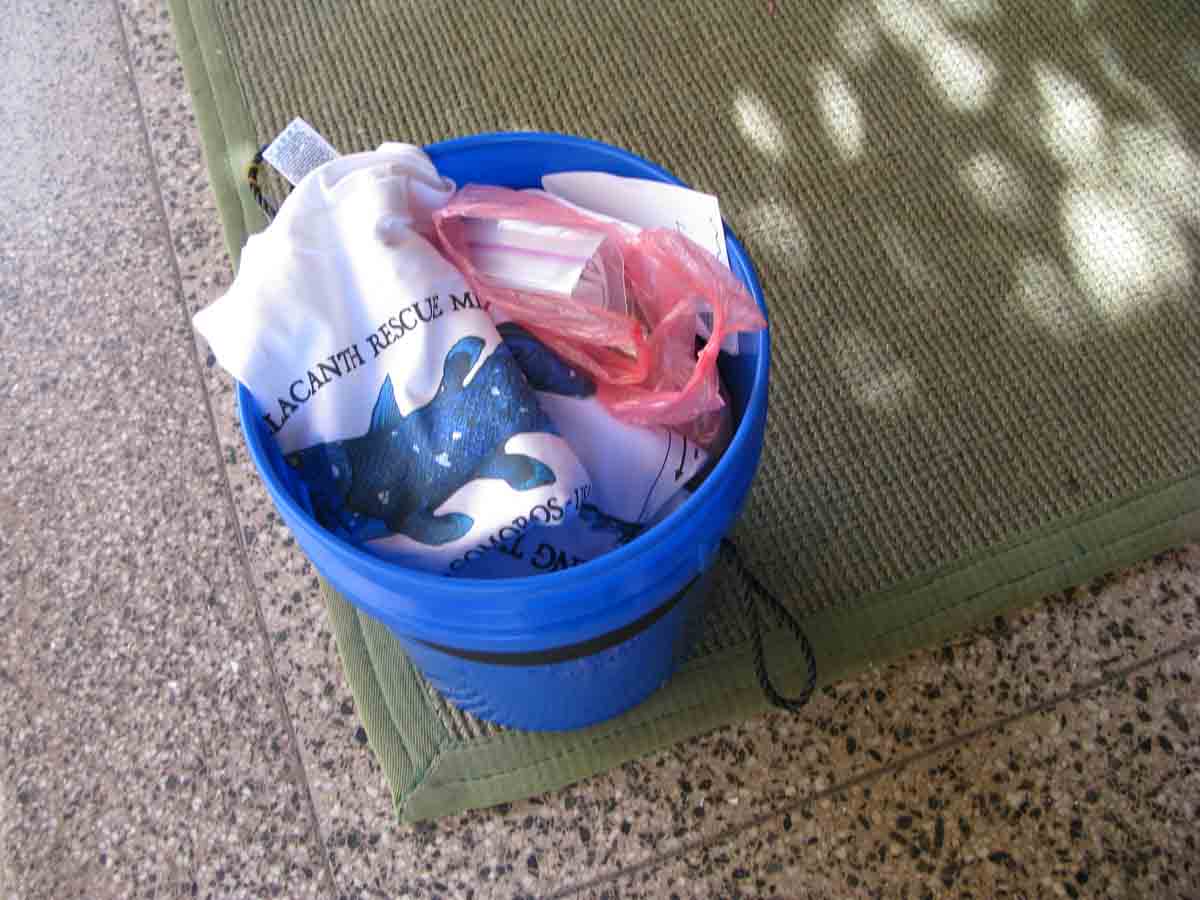
CRM Deep Release T Shirts and Release Kits arrive at Tanga in Feb '08.
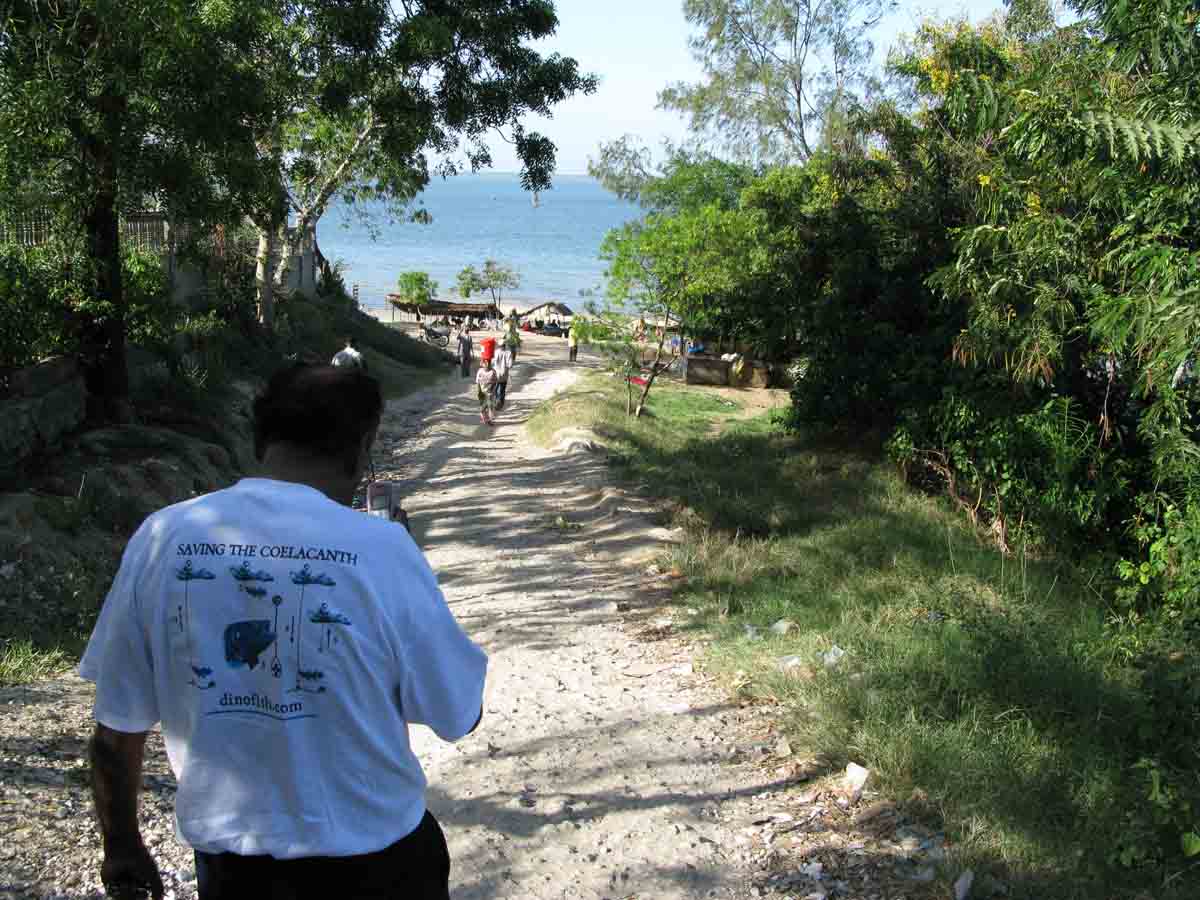
New Feature: "Lands of the Fish" A photo gallery of scenes in and around exotic Tanga. Have a visit. Click Here. You can return to the dinofish home page at the end of the tour.
A new deep-sea port planned to be built in Mwambani Bay, just 8km south of the original old Tanga Port, would include submarine blasting and channel dredging, destroying known coelacanth habitat in the vicinity of Yambe and Karange islands - the site of several of the Tanzanian coelacanth catches. In the meantime, the very same area has been gazetted as the Tanga Coelacanth Marine Park. Tensions were brewing as local residents in the area were already being evicted from their lands and livelihoods by the harbor project, though not even a single Environmental Impact Assessment had been done. The new port would be put down right in the middle of the Coelacanth Marine Park. As of 2023, a port expansion was under construction by a Chinese company, but at the location of the old port. Phase I was completed and the first megaship expected in March.
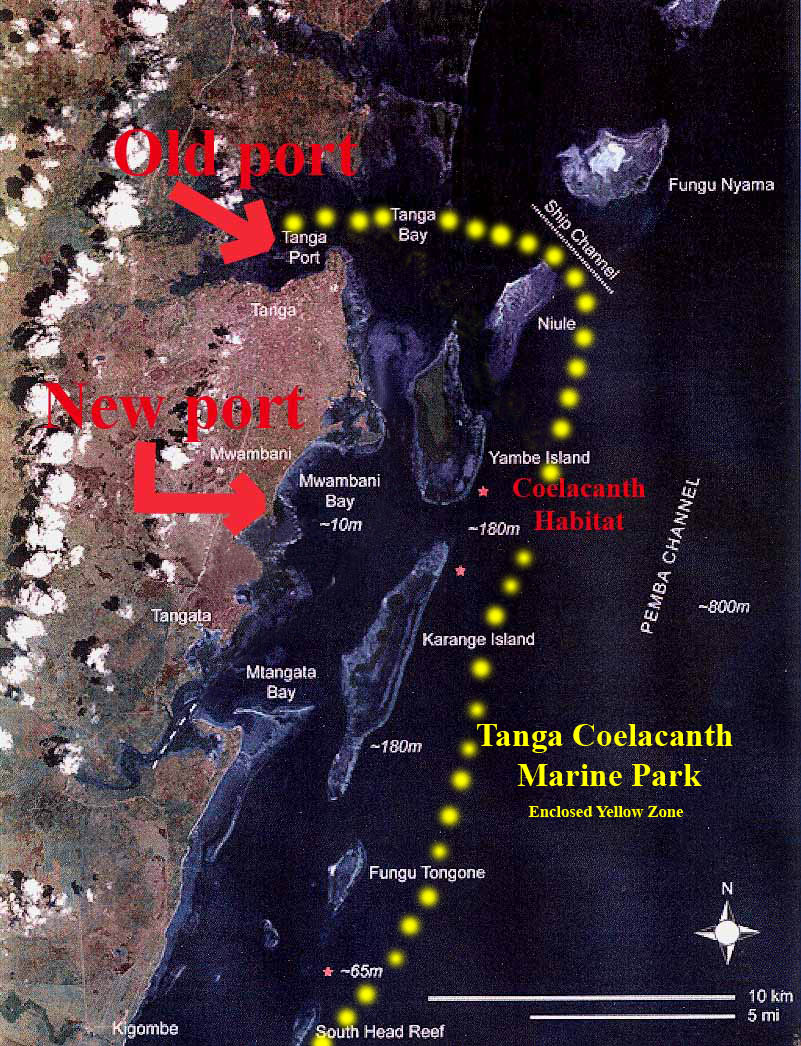
At the same time, a tradition of dynamite fishing by locals in the area was trashing the reefs where coelacanths and other marine creatures live. (See below: reefs are pink, dynamite fishing area red.)

Map detail: World Resources Institute

